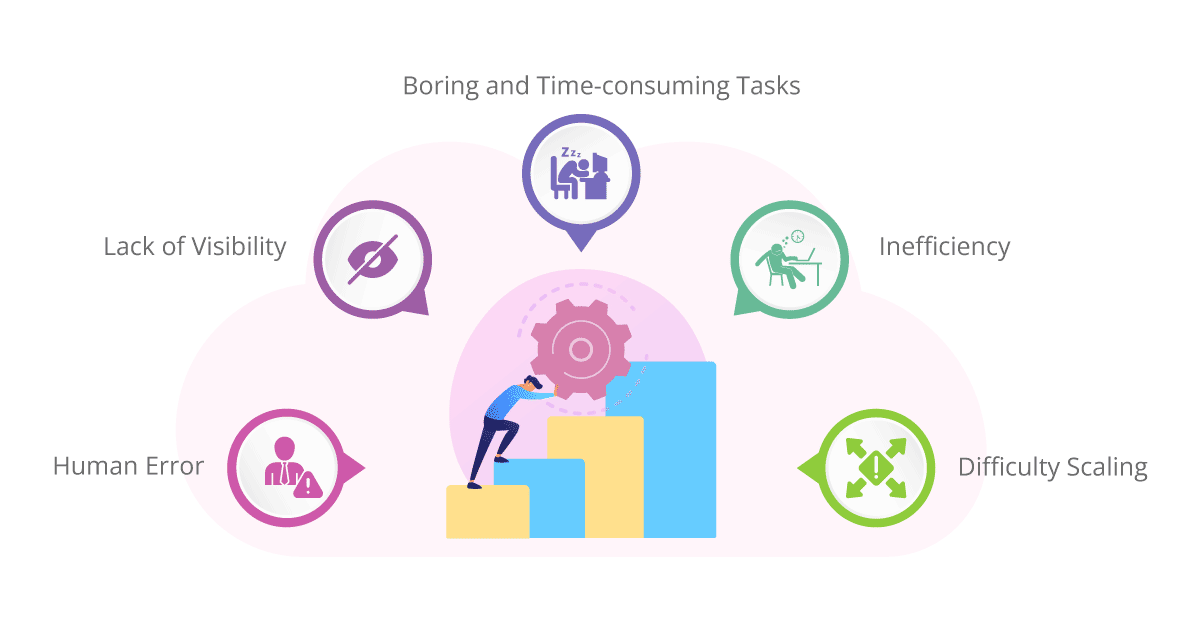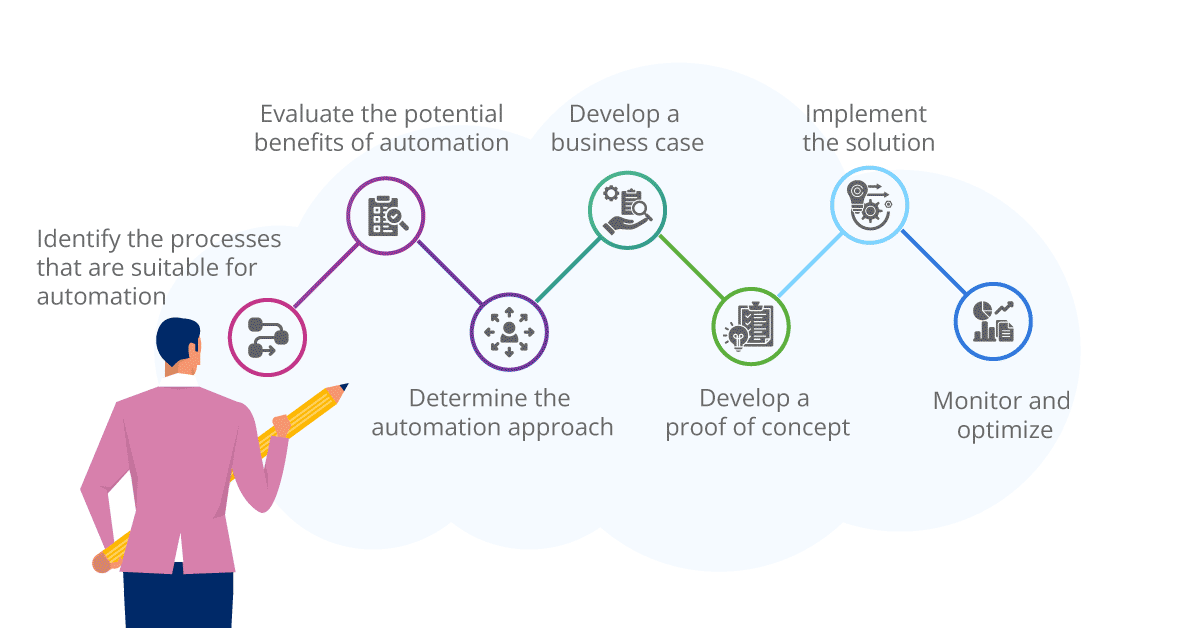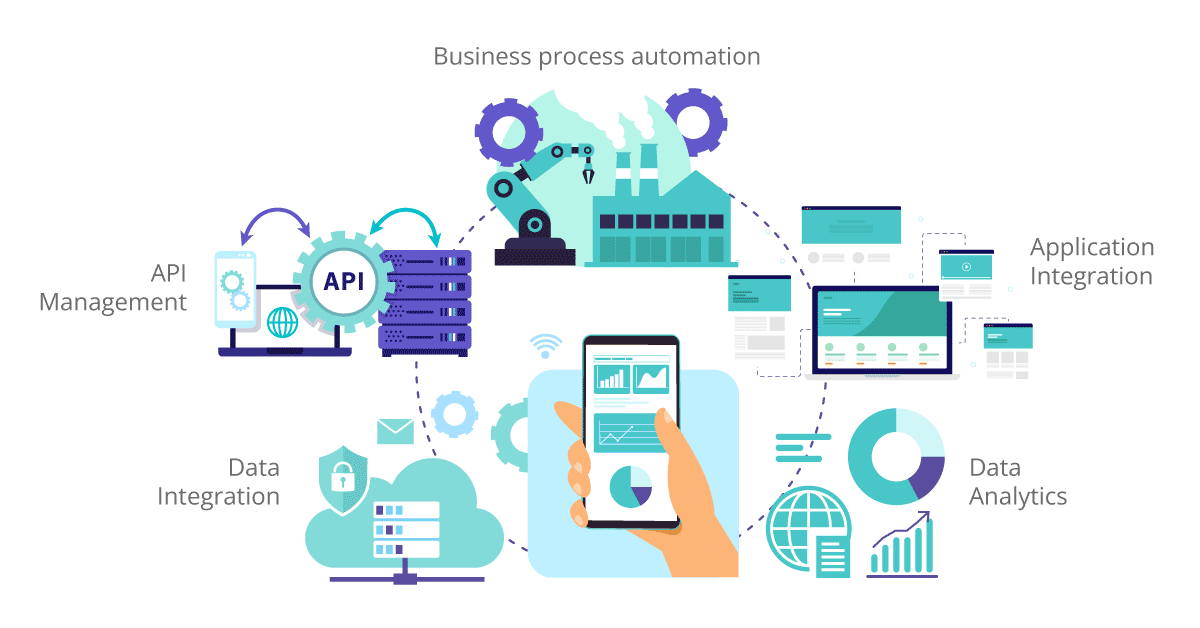In the hustle and bustle of the modern business world, every moment counts. We all know that time is money, and wasting even a single minute can hurt your bottom line. That’s why it’s so important to simplify your operations and automate them as much as possible. Luckily, with iPaaS (Integration Platform as a Service), you can achieve this with ease and speed.
Imagine being able to integrate all your different systems and applications, automate those repetitive tasks that always seem to slow you down, and manage all your data flows seamlessly. With iPaaS, you can do all this and more. By cutting out tedious manual processes, you can reduce errors and make your business more efficient and productive.
Aonflow iPaaS – Free for First 3 Months!
Build and run up to 1,500 transactions monthly with no cost. No payment info needed!
No matter what size your business is, iPaaS can help you streamline your operations and achieve your goals. It’s a powerful tool that makes it easier than ever to connect different systems and automate tasks. So, if you’re looking to take your business to the next level, iPaaS might just be the answer you’ve been searching for.
iPaaS is like a superhero for your business – a cloud-based platform that can seamlessly connect different systems and applications, saving you time and energy. With iPaaS, you can automate those tedious workflows that are used to slow you down and manage your data flows like a pro.
Say goodbye to the days of manually entering data and hello to a world of automation! iPaaS eliminates the need for tedious manual processes, reducing errors and improving the efficiency and productivity of your business. You’ll be able to focus on what matters most – growing your business and serving your customers.
Whether you’re a small business owner or part of a large enterprise, iPaaS can help you simplify your operations and streamline your workflow. It’s a powerful tool that can make a huge difference in your day-to-day operations.
Let’s delve right into it then.
Let’s talk about challenges in operations without automation
As a business owner, you know that managing operations can be a tough task. When you’re doing everything manually, there are a lot of repetitive tasks that can eat up your time and lead to mistakes. Here are some common challenges that businesses face when they don’t automate their operations:
Boring and Time-consuming Tasks – Some tasks are just plain boring and repetitive, such as data entry or creating reports. Doing these tasks over and over again can be a drag, and it can take away time that you could be spending on other important tasks.
Inefficiency – When you’re doing everything manually, you’re relying on human effort for every step of the process. This can lead to delays and errors, which can end up costing you time and money. For example, if you’re managing inventory manually, it can be hard to keep track of what you have in stock, which can lead to over or under-ordering.
Lack of Visibility – Without automation, it can be hard to get a clear picture of what’s happening in your business. You might not have real-time access to important data, like sales figures or inventory levels, which can make it difficult to make informed decisions.
Human Error – Let’s face it, we’re all human, and humans make mistakes. When you’re doing things manually, there’s a higher risk of making mistakes, whether it’s a simple typo or a more serious error. These mistakes can have serious consequences for your business, such as lost revenue or damage to your reputation.
Difficulty Scaling – If your business is growing, it can be hard to keep up with the increased workload when you’re doing everything manually. Hiring more staff can be expensive, and it may not be sustainable in the long term.
The importance of streamlining operations
Running a business is a lot like juggling multiple balls at once – there are a million different things to keep track of, and it can be overwhelming at times. That’s why streamlining your operations is so important. By simplifying processes and automating repetitive tasks, you can save time, reduce errors, and improve productivity. Here are a few examples of why streamlining your operations is crucial:
Time is Money – When you’re running a business, time is one of your most valuable resources. Every minute you spend on a task that could be automated or streamlined is a minute you’re not spending on other important tasks, like growing your business or serving your customers. By streamlining operations, you can free up time and focus on what matters.
Improved Efficiency – When you streamline your operations, you can eliminate redundancies and make your business more efficient. For example, if you have separate systems for managing inventory and sales, you might be spending extra time manually entering data into both systems. By integrating those systems with iPaaS, you can eliminate that duplication of effort and make your business more efficient.
Reduced Errors – Humans make mistakes, it’s just a fact of life. But when you’re dealing with important business processes, even a small error can have big consequences. By automating tasks like data entry, you can reduce the risk of errors and make sure that everything is accurate and up-to-date.
Improved Customer Experience – When you streamline your operations, you can serve your customers better. For example, if you’re running an e-commerce store, automating your order fulfillment process can ensure that your customers receive their orders quickly and accurately. This can lead to happier customers and more repeat business.
In short, streamlining your operations is crucial for running a successful business. By simplifying processes and automating repetitive tasks, you can save time, reduce errors, and improve productivity – all of which can help your business thrive.
What does automation of operations entail?
Automation of operations involves the use of technology to automate various tasks and processes within a business. This can include automating tasks such as data entry, document management, customer service, and production processes.
The goal of automation is to reduce the need for manual intervention, increase efficiency, and improve overall performance. Automation can help businesses save time and resources, allowing employees to focus on higher-value tasks that require human expertise.
Automation of operations can take many forms, depending on the specific needs of the business. For example, businesses can use robotic process automation (RPA) to automate repetitive, rules-based tasks such as data entry or invoice processing. They can also use artificial intelligence (AI) and machine learning to automate more complex tasks, such as customer service or production processes.
One key benefit of automation is improved accuracy and consistency. By automating tasks, businesses can reduce the risk of errors and ensure that tasks are completed consistently and efficiently. This can help improve customer satisfaction, reduce costs, and prevent potential legal issues that may arise from inaccurate record-keeping.
Another benefit of automation is increased speed and productivity. By automating tasks, businesses can complete them faster and more efficiently, allowing them to accomplish more in less time. This can lead to increased productivity and improved overall performance.
Automation of operations involves the use of technology to automate various tasks and processes within a business. By reducing the need for manual intervention, automation can help businesses save time and resources, improve accuracy and consistency, and increase speed and productivity.
Operations automation in a post-COVID world
The COVID-19 pandemic has accelerated the need for operations automation in businesses around the world. With many employees working from home and supply chains disrupted, businesses have had to quickly adapt and find new ways to operate efficiently.
Operations automation has played a key role in this adaptation process. Businesses have implemented new technologies to automate tasks such as data entry, document management, and customer service, allowing them to continue operating despite the challenges posed by the pandemic.
Aonflow is the leading integration platform.
You can kick-start by integrating your first-ever workflow in just a matter of minutes.
One area where operations automation has been particularly important during the pandemic is in supply chain management. With supply chains disrupted by lockdowns and other restrictions, businesses have had to find new ways to manage inventory and ensure that they have the resources they need to operate. Automation has helped businesses quickly adapt to these changes by providing real-time data on inventory levels and supply chain disruptions, allowing them to make informed decisions and adjust their operations accordingly.
Another area where operations automation has been important during the pandemic is in customer service. With many customers unable to visit physical stores or offices, businesses have had to find new ways to provide customer service and support remotely. Automation tools such as chatbots and virtual assistants have helped businesses provide quick and efficient customer service, even when employees are working from home.
In addition to these specific examples, operations automation has played a broader role in helping businesses adapt to the challenges posed by the pandemic. By reducing the need for manual intervention and improving efficiency, automation has helped businesses save time and resources, allowing them to focus on adapting to the new reality of the post-COVID world.
Operations automation has become increasingly important in a post-COVID world. As businesses adapt to new challenges and changes in the way they operate, automation can help streamline operations, reduce costs, and improve overall performance. By leveraging automation tools in areas such as supply chain management, remote work management, and customer service, businesses can better navigate the challenges of the post-COVID world and position themselves for long-term success.
How to ascertain if you need to streamline operations using iPaaS?
Determining whether or not to streamline operations using iPaaS (Integration Platform as a Service) involves assessing the current state of the business and identifying areas where automation could be beneficial. Here are some steps to help ascertain if you need to streamline operations using iPaaS:
Identify manual processes: Take an inventory of all the processes within your business that are currently being performed manually. This could include tasks such as data entry, file management, or customer service.
Analyze process efficiency: Assess the efficiency of each process and determine how much time and resources are being allocated to each task. Identify any areas where efficiency could be improved through automation.
Determine areas for improvement: Identify areas where automation could help improve efficiency, reduce costs, and improve overall performance. This could include tasks that are repetitive, time-consuming, or prone to errors.
Research iPaaS solutions: Research iPaaS solutions and evaluate them based on their ability to integrate with your existing systems and automate the processes you have identified as needing improvement.
Assess the benefits of automation: Determine the potential benefits of automation, such as increased efficiency, reduced costs, and improved accuracy. Consider the ROI of implementing iPaaS solutions and weigh the potential benefits against the cost of implementation.
Determining whether or not to streamline operations using iPaaS involves assessing current processes, analyzing efficiency, identifying areas for improvement, researching iPaaS solutions, and assessing the benefits of automation. By taking a structured approach to assessing the need for automation, businesses can make informed decisions about whether or not to implement iPaaS solutions and position themselves for long-term success.
Operations management automation
Operations management automation involves using technology to automate various aspects of operations management, such as planning, organizing, coordinating, and controlling resources to achieve business objectives efficiently and effectively. This can include using software and other tools to automate tasks such as data entry, scheduling, inventory management, and quality control.
One area where operations management automation has become increasingly important is in supply chain management. By automating supply chain processes such as procurement, inventory management, and logistics, businesses can improve efficiency, reduce costs, and better respond to changes in demand.
Another area where operations management automation can be beneficial is quality control. By using automation tools such as machine learning and AI, businesses can identify quality issues more quickly and accurately, leading to improved product quality and customer satisfaction.
Automation can also be used to improve employee productivity and reduce the risk of human error. For example, project management software can help automate the planning and tracking of projects, while task management tools can help automate the assignment of tasks and deadlines.
What should the automation roadmap for operations look like?
The automation roadmap for operations will vary depending on the specific needs and goals of the organization. However, here are some general steps that organizations can follow to create an effective automation roadmap:
Identify the processes that are suitable for automation: The first step is to identify the processes that can be automated. These processes should be routine, repetitive, and rule-based, as they are the ones that are most suitable for automation.
Evaluate the potential benefits of automation: Once the processes have been identified, it is important to evaluate the potential benefits of automation. This includes time and cost savings, increased productivity, and improved accuracy.
Develop a business case: After evaluating the potential benefits, it is important to develop a business case for automation. This should include a cost-benefit analysis, ROI projections, and an assessment of the risks involved.
Determine the automation approach: There are several automation approaches available, including robotic process automation (RPA), cognitive automation, and artificial intelligence (AI). Determine which approach is best suited for the identified processes.
Develop a proof of concept: Before implementing automation, it is important to develop a proof of concept to test the feasibility of the solution. This will help identify any issues that need to be addressed before full implementation.
Implement the solution: Once the proof of concept has been tested and any issues have been addressed, the automation solution can be implemented. This should be done in a phased approach to minimize disruption to operations.
Monitor and optimize: After implementation, it is important to monitor the automation solution and optimize it as needed. This includes identifying any errors or issues and making improvements to the solution over time.
Which operations should be automated using iPaaS?
iPaaS (Integration Platform as a Service) can be used to automate a wide range of operations across different departments and functions of an organization. Here are some examples of operations that can be automated using iPaaS:
Data integration: iPaaS can be used to automate the integration of data from different sources such as databases, cloud applications, and on-premises systems. This includes extracting, transforming, and loading data to ensure it is accurate and up-to-date.
Application integration: iPaaS can also be used to automate the integration of different applications used by an organization. This includes integrating cloud-based applications with on-premises systems and legacy applications.
Business process automation: iPaaS can be used to automate business processes such as order processing, invoicing, and customer service. This includes automating workflows, triggering alerts, and notifying stakeholders when specific events occur.
Data analytics: iPaaS can also be used to automate the collection, processing, and analysis of data. This includes integrating data from different sources, transforming it into a format that can be analyzed, and creating reports and dashboards.
API management: iPaaS can be used to automate the management of APIs (Application Programming Interfaces) that allow different applications to communicate with each other. This includes securing APIs, monitoring usage, and managing access.
iPaaS can be used to automate a wide range of operations across different departments and functions of an organization, making it a powerful tool for improving efficiency and productivity. The specific operations that should be automated using iPaaS will depend on the needs and goals of the organization.
Why Aonflow iPaaS for streamlining operations?
Aonflow iPaaS is a powerful integration platform that offers a wide range of features and capabilities to streamline operations. One of the key advantages of Aonflow iPaaS is its ability to simplify integration by providing a user-friendly interface that allows users to drag and drop different components and connectors. This makes it easy for even non-technical users to create complex integrations and workflows, reducing the need for specialized IT skills and knowledge.
In addition to simplifying integration, Aonflow iPaaS can also help automate workflows by creating triggers that activate specific actions when certain events occur. This includes automating routine tasks such as data processing, email notifications, and alerts, which can save time and reduce the risk of errors. By automating workflows and integrating different applications and data sources, Aonflow iPaaS can increase efficiency and reduce the time and resources required to complete routine tasks.
Another key advantage of Aonflow iPaaS is its ability to provide real-time insights into business operations by capturing and analyzing data from different sources. This allows users to monitor KPIs, identify trends, and make data-driven decisions. The platform provides a range of tools for data analysis and visualization, including dashboards and reports, which can help users quickly identify areas that require attention or improvement.
Aonflow iPaaS also offers enhanced security features that can help ensure the confidentiality, integrity, and availability of data and applications. This includes encrypting data, monitoring access, and ensuring compliance with industry regulations. By providing a secure platform for integrating and managing data and applications, Aonflow iPaaS can help reduce the risk of data breaches and other security incidents.
In conclusion, Aonflow iPaaS is a powerful integration platform that can help organizations streamline their operations by simplifying integration, automating workflows, providing real-time insights, and enhancing security. With its user-friendly interface, advanced features, and robust security capabilities, Aonflow iPaaS can help organizations improve efficiency, reduce costs, and drive innovation.
Aonflow iPaaS – Free for First 3 Months!
Build and run up to 1,500 transactions monthly with no cost. No payment info needed!



